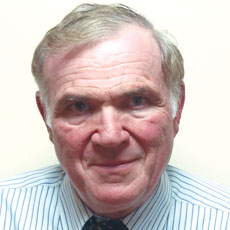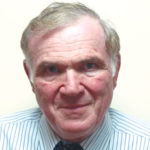
Healthcare reform, especially the expansion of Medicaid, will bring into focus the fragility of the safety net. The safety net as a loose collection of agencies and facilities (some identified and others not) that care for vulnerable and impaired people is not coordinated or at times aware of the function it performs. In the absence of a planned and developed safety net system, an informal system of care developed mainly of private and propriety providers who provide the service often with funding from Medicaid.
This situation does not fit the formula for reform, which depends on organized, planned, proactive and coordinated care. Unfortunately, we were likely to become aware of the system fragility when there are no services, when person becomes “stuck” in the system with few available alternatives, harm comes to the person or families are unfairly burdened. The safety net system has not been financed adequately and continued to struggle. Recognition of its value to reform will necessitate the recognition of its role, redesign of its services and inclusion as essential services.
There is an increasing recognition that this safety net comprises many components, and layers. No one aspect is more significant than others. Further, reform must keep the system balanced. We have many examples of efforts to provide services in the home-like environment failing. The results are that many who needed a secure specially structured setting were placed in non-institutional settings that were not structured or designed to accommodate their needs. When they fail, they often fail catastrophically, causing more harm to the person, disruptions to appropriate clients and expense to the system. We are beginning to see the impact in hospitalizations and extended post acute care for many individuals discharged out of safe, secure and skilled facilities. Much of this financial impact occurs on the Medicare side of the dual eligibles. It raises serious issues for those agencies addressing dual-eligibles.
To accommodate the needs and insure the viability of the safety net, providers such as skilled nursing facilities, must be capable of providing these vulnerable individuals not only with a bed in a secure setting to prevent harm but programs to enable them to rehabilitate and maintain function. The demonizing of any part of the system is harmful in securing support for their necessary functions, and when families make the painful decision that their relative requires this level of care in a residential setting. Rather than minimizing their role, society needs to expand their designated role as centers or units that address coordination of the system. This situation applies for those with chronic diseases, dementia, and other populations (head injured, pediatric, developmentally delayed) who need more treatment and programming that is beyond residential care such as provided by assisted living, group homes, and independent living. This situation necessitates that facilities become specialized. These facilities will be local to insure their connection to the community. In some instances, regional resources will be needed for specialized populations. With healthcare reform, the opportunity to redesign the system to care for all especially the most vulnerable becomes possible.
When untold event happens, the public becomes more aware of its real interest and needs. We had such an untold event of massive proportion – government shutdown. Opposition to the Affordable Care Act and the reform that it entails precipitated in part the government shutdown. The interesting part is that this attempt to stymie reform has given it impetus. Despite its shortcoming, the public is increasingly accepting reform. It is a matter of time before it significantly affects post acute and long term care. Attention is increasingly directed to system capacity, and how various components add value and contribute to its being safe, preventing harm and being fair. Further, it appears that the cost of post-acute services is growing more rapidly than physician and hospital services.
As part of the safety net, skilled nursing facilities have provided a critical role in the care of vulnerable populations and have the potential for continuing to meet the health needs of people with complex health, behavioral, socioeconomic, cultural, and linguistic barriers to the care prevalent among vulnerable populations. They provide safe, secure and skilled services. While much of reform currently focuses on access in terms of enrolling sufficient number to make the exchanges work and readmissions, the emphasis will shift to the vulnerable and chronic populations and how to keep them safe in an affordable way. SNFs, as a part of integrated care networks, will play a role in an emerging system.
James Lomastro, Ph.D., has worked in acute, community based and long-term care for 33 years. He has held an administrator license since 1991. Prior to involvement in administration, he held academic and research appointments at Boston University School of Medicine and Northeastern University.




